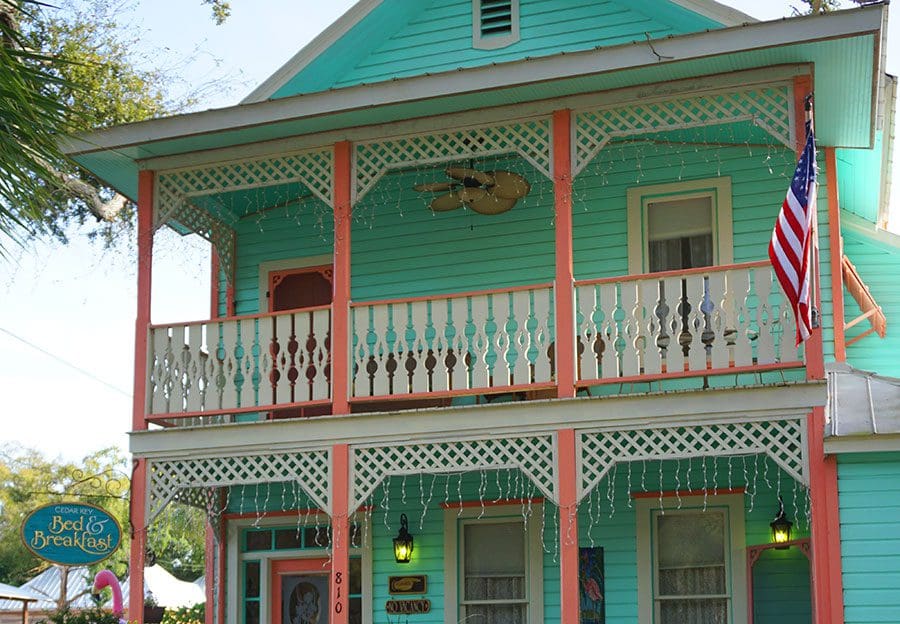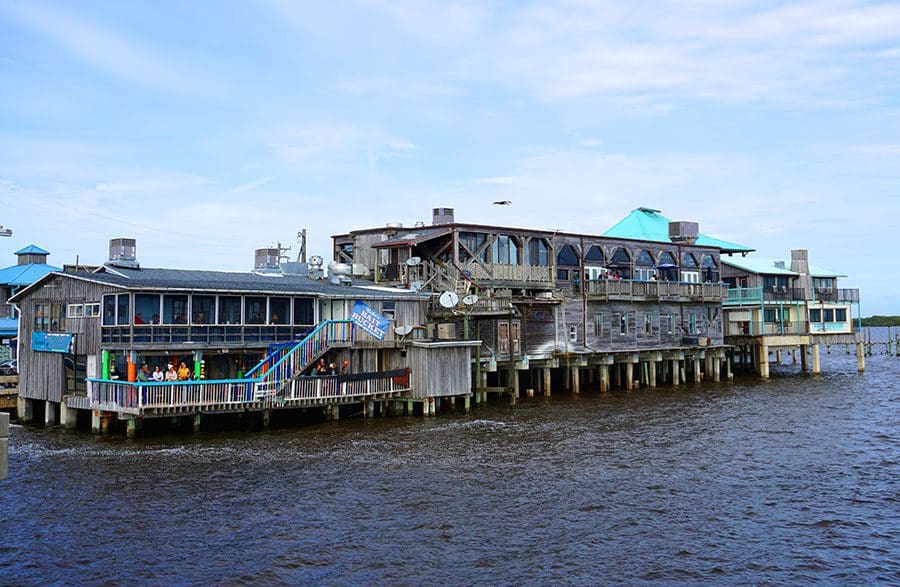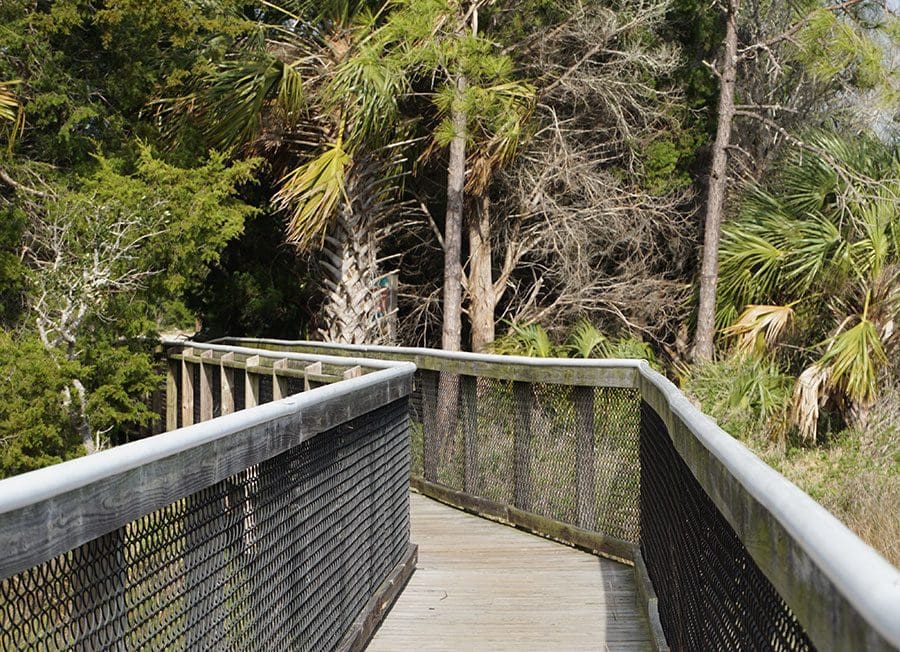
By Mary Ann DeSantis
Near & Far: At the end of the road


Historic Cedar Key stands where State Road 24 reaches the Gulf of Mexico, the perfect destination for a daycation or a weekend getaway.
Every time a hurricane makes a trek up the Gulf of Mexico, my worries often turn to Cedar Key, a jewel on Florida’s Nature Coast. The historic district’s main thoroughfare, Second Street, is practically at sea level, and the weathered buildings on Dock Street sit precariously over the water. But somehow, Cedar Key is resolute in its ability to withstand disasters, wars, and time.

Photo: Mary Ann DeSantis
When I try to imagine what Old Florida fishing villages must have been like a hundred or more years ago, a picture of Cedar Key pops into my mind. The weather-worn structures are as authentic as buildings can be; the Island Hotel was built in 1859, and the historic downtown looks much like it did in the early 20th century. Inside the shops and restaurants are friendly locals who are eager to share the town’s history as well as their own colorful stories.
The Cedar Key Historical Museum is the place to begin to understand the town’s importance to Florida history. Many people are surprised to know the Civil War reached Cedar Key when Union troops blockaded all of the Cedar Keys and a battle occurred on the mainland. Later, two pencil companies were drawn to the area because of the numerous cedar trees and established saw mills. Red cedar slats for pencils were shipped to pencil companies in the North and in Europe. The town, located on Way Key, boomed in the 1880s with stores, hotels, steamships, fishing, oystering, and boat building. The first cross-state (Atlantic to Gulf) railroad ran from 1861 to 1932.
A devastating 1896 hurricane and the depletion of maritime and timber resources caused a decline. In 1900, the population was only 700, and growth was slow. The most important development may have been the formation of the Cedar Keys National Wildlife Refuge in 1929. Today, the area is known for its pristine wetlands and wildlife as much as it is for food, art, and tourism.

Photo: Mary Ann DeSantis
Nature Coast
The Cedar Keys, a cluster of small islands, epitomize the area’s nickname, “Nature Coast.” Hiking, birding, fishing, kayaking, and just enjoying the outdoors bring people to the area all year. The area has become a source of inspiration for wildlife photographer Richard Wise, owner of NatureWise Photo Images and a resident of The Villages.

“People who are nature-oriented will appreciate Cedar Key,” Richard says. “I photograph there because of the variety of wildlife, and especially for the many species of birds. I like the Old Florida aspect of the town, but all the keys are wonderful.”
Richard and his wife, Cindy, often camp in the area and spend time kayaking and fishing. “We often photograph right out of the boat, and have gotten some amazing pictures,” he says.

To get an up-close view of the islands, consider a free ecotour guided by master naturalist Paul King. Donations are accepted and benefit the new public education center at the University of Florida Institute of Food and Agricultural Sciences’ Nature Coast Biological Station in Cedar Key. Guests may use their own kayaks or rent from Kayak Cedar Keys. For reservations, call 352.543.9447.
VIBRANT ARTS COMMUNITY
I have yet to visit Cedar Key when I didn’t come home with a piece of art. Just walk down the street and you’ll see local artists and an assortment of galleries, including a quilting shop. My first stop usually is the Cedar Key Arts Center, an artists’ co-op that features an eclectic assortment of vases, jewelry, fiber arts, paintings, photographs, and more.

My latest find, however, was Cedar Key Canvas, a small cottage business that manufactures colorful and sturdy purses, backpacks, and totes. Just stop in at the Cedar Key Welcome Center to see samples of monogrammed coin purses and get directions to this charming shop that opened in 1986.
The last weekend in March, artists from around the nation will display wares at the 55th annual Old Florida Celebration of the Arts. For three years in a row, the juried festival has been named one of the Top 10 Best Arts Fairs in America in the national Art Fair Calendar’s annual survey.
FLORIDA’S CLAM CAPITAL
A trip isn’t complete without tasting Cedar Key’s signature dish: clam chowder. In 2009, Tony’s Seafood Restaurant won the annual Great Chowder Cook-off in New England. Amazingly, Tony’s Cedar Key clam chowder beat the New Englanders again in 2010 and 2011 and won a chance to retire the recipe in the Cook-off Hall of Fame.

Photo: Tony DeSantis
Crowds continue to line up at Tony’s on the corner of Second Street, and almost every other restaurant in town now offers its own version of clam chowder. We found the chowders at Duncan’s on the Gulf, a Dock Street eatery overlooking the water, to be just as sensational on a recent trip. And because one bowl is never quite enough, we stopped at Tony’s on the way out of town to take home a quart of the legendary chowder for dinner.
For a behind-the-scenes look at Cedar Key’s clam industry, sign up for the It’s a Whole ClamLife Tour at the Southern Cross Sea Farms on State Road 24. Tours begin at 1pm each Friday from November through May.
If you’re in the mood for steamed clams or other seafood, plan to spend an elegant evening at the Island Hotel Seafood Restaurant. Many of the recipes have been passed down through history to today’s chefs, who use only local ingredients.

Photo: Mary Ann DeSantis







